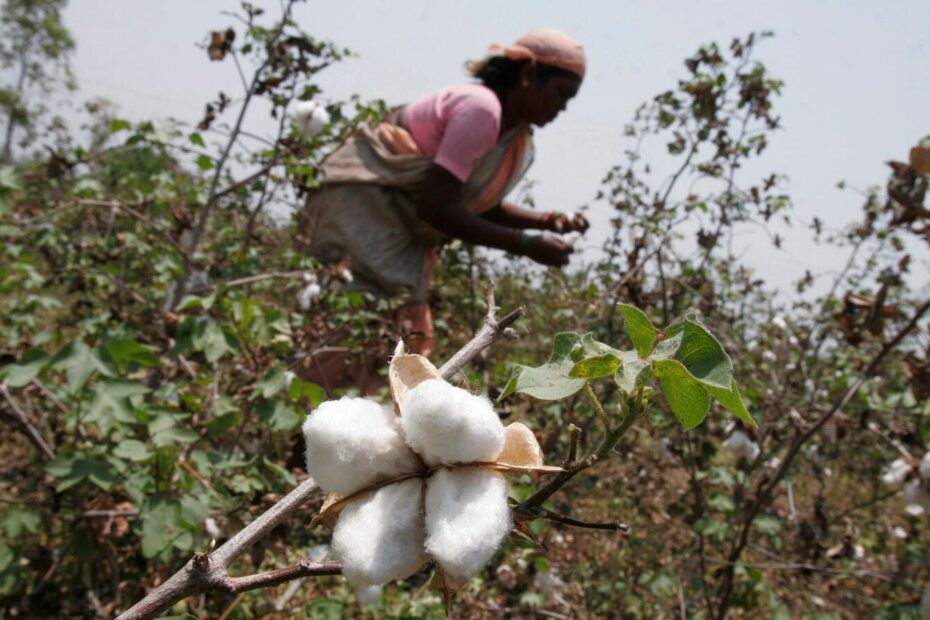New Delhi: Reduced cotton sowing in the ongoing kharif season is raising doubts about whether the government will be able to meet its ambitious textile export target, dashing hopes of Indian readymade garment (RMG) shipments scooping up extra orders in the wake of the Bangladesh crisis, two persons said.
Cotton sowing had dropped to 11.24 million hectares as of 13 September, as compared with 12.36 million hectares during the same period last year, according to agriculture ministry data.
The decline comes amid an already challenging period for Indian cotton production.
“Certainly, there has been a contraction in production in recent years, and this year, low sowing levels are expected to result in a reduced production of cotton bales,” the first person said.
“We are hoping that the area under sowing will improve slightly to 11.6 million hectares from presently 11.2 million hectares. This is expected as summer sowing in Tamil Nadu will add 200,000 hectares, and another 100,000 hectares will come from sowing in the western parts of Telangana and Karnataka during the summer season,” this person said.
Export may be hit
Summer sowing of cotton seeds is done during February-March.
“Low production will impact the export of textiles, and it is expected to be lower compared ti the last fiscal year,” the second person said.
Textiles exports is witnessing a declining trend. It dropped from $33.83 billion in FY20 to $29.46 billion in FY21. Although exports rose to $41.12 billion in FY22, they then fell to $35.55 billion in FY23 and further to $34.40 billion in FY24.
The government has set a target to exceed $40 billion in textile exports by FY25.
“Given the low sowing area expected to result in reduced production, achieving the projected export target of over $40 billion by FY25 will be challenging. The current trend in lower sowing and production raises concerns about meeting these ambitious goals in future too,” said Abhash Kumar, assistant professor of Economics, Delhi University.
The country’s cotton production, which peaked in FY20 at 36 million bales (each bale weighing 170 kg), has also seen a downward trend over the years.
In FY21, production slipped to 35 million bales, followed by a further drop to 31 million bales in FY22. Though production recovered slightly to 33 million bales in FY23, it fell again to 32 million bales in FY24.
Switching crops
Challenges in cotton farming have stiffened in recent years: outdated seed technology has significantly impacted yields, prompting many farmers to switch to alternative crops like soybean, paddy, etc.
“The shortage of labour and the increased time required for cultivation, along with outdated technology, are also contributing to decreased productivity in cotton farming. Compared to soybean farming, cotton cultivation demands more intervention and resources, making it less efficient,” said Ganesh Nanote, a cotton farmer in Maharashtra’s Vidarbha region.
The biggest cotton-growing states are Gujarat, Maharashtra, Telangana, Andhra Pradesh, Madhya Pradesh, Karnataka, Haryana and Rajasthan.
Exports to scale up
According to the Commerce Ministry’s India Brand Equity Foundation (IBEF), the market for Indian textiles and apparel is projected to grow at a 10% CAGR, reaching $350 billion by 2030. India also set a target to scale up its textile exports to $100 billion by 2030, aiming to capture a significant share of the global market.
“About 55-60% of India’s textile and apparel exports are natural fibre based, predominantly cotton. So low cotton sowing and resultant price rise of cotton fibre are a significant risk to Indian textile and garment exports,” said Mihir Parekh, Associate Partner, Garments, Foundation for Economic Development (FED).
“This risk is increased by the fact that import of cotton fibre attracts 10% duty. This can substantially affect India’s export competitiveness by increasing the raw material price throughout the value chain,” Parekh said.
Moreover, India is the world’s third largest exporter of textiles and apparel and ranks among the top five global exporters in several textile categories.
The textiles and apparel industry contributes 2.3% to the country’s GDP, 13% to industrial production and 12% to exports. The textile industry in India is predicted to double its contribution to the GDP, rising from 2.3% to approximately 5% by the end of this decade, the IBEF report said.
The budget allocation for the textiles sector has been increased by ₹974 crore to ₹4,417.09 crore in the Union Budget 2024-25.
In the budget, the allocation for research and capacity building in the sector was raised to ₹686 crore from ₹380 crore and the allocation for the National Technical Textiles Mission jumped 120.59% to ₹375 crore from ₹175 crore in 2023-24.
Catch all the Industry News, Banking News and Updates on Live Mint. Download The Mint News App to get Daily Market Updates.
MoreLess
